Hawaiian South Shore July 2021 Newsletter
Share
NEWSLETTER JULY 2021

Ala Moana: The South Shore’s Performance Surfing Center
If Waikiki is the center of longboarding and surf lessons on the South Shore, the Ala Moana is the local, shortboarding zone. Located just west of Waikiki, Ala Moana features a high density of quality reef breaks stretching from Kewalos all the way through the beach park to Magic Island, and then across the channel to Bowls and Kaisers. Whether you are looking for rights, lefts, barrels, turns, or even an exclusive bodysurfing wave, Ala Moana has it all.
In addition to lots of waves, Ala Moana also has lots of history. Local legends include Davey Boy Gonzales, the Mike and Derek Ho, and Jeannie Chesser. And of course Gerry Lopez grew up surfing Ala Moana. Most people only think of Lopez as Mr. Pipeline, but he was actually born in Honolulu and surfed the waves in Town when he was a kid. He ended up winning the state championships at 14, and by that time he was honing his style at Bowls and starting to take trips out to the Country, where he eventually developed one of the most celebrated relationships with Pipeline of any surfer alive!
The beauty of Ala Moana is that it has something for everyone, from a beginner on a rented longboard to one of the greatest Pipeline surfers of all time. Here are a few of the best spots along the Ala Moana reefs.
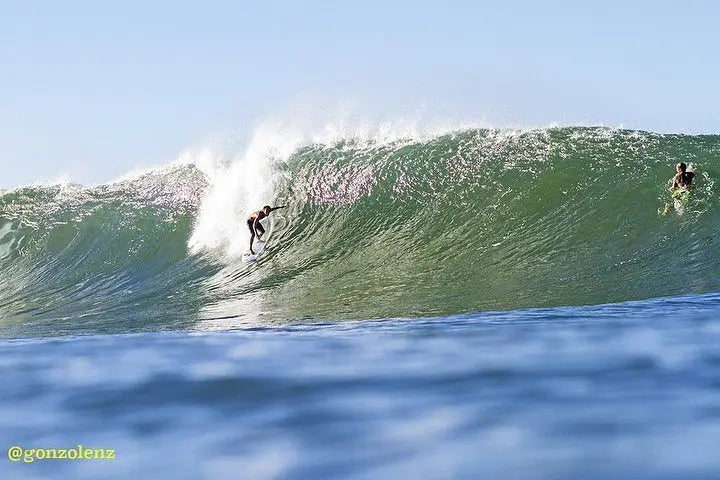
Bowls: Ala Moana Bowls is considered to be one of the best waves on the South Shore, and it’s not a great mystery why. Created in the 1950s when the Ala Wai Canal was dredged out, this left-hander is one of the few waves on the island that breaks into a reef pass, and is super rippable up to around the head high mark. When it gets bigger than that, Big Bowl starts to break, which produces the best barrels in Town. To access Bowls, you can either paddle out from the Ala Wai Yacht Harbor or walk out to the end of Magic Island, jump off the rocks, and paddle across the channel. Just watch out for the boats!
Kaiser Bowl: The easternmost wave along the Ala Moana stretch before you officially enter Waikiki territory, Kaisers is a shallow, steep, right-hand bowl with a competitive crowd that tends to be a bit more localized than Ala Moana Bowls. Kaisers handles up to the head-high+ range, then starts to close out when it gets too big.
Concessions: Named for the concession stands on the beach directly in from this wave, Concessions is a Beach Park spot that features an A-frame peak with both lefts and rights. The rights are rippable and break into First Holes, while the left is punchy and steep and breaks into the classic barrels of Big Rights. Like most spots along the Ala Moana Beach Park stretch, Concessions tends to blend in with all the other peaks, especially for those who are inexperienced in the area. But the wave has a devoted crew of locals who swear by their Concessions sessions, and is definitely worth check.
Kewalos: Ala Moana’s other left-hand reef pass, Kewalos breaks into the channel running parallel between Point Panic and Kaka’ako and has a reputation for being a bit sharky, but is also one of the most user-friendly, high-performance waves on the South Shore. While the left is the main attraction, the right is also quite fun. Crowds can get crazy, but there’s a reason they flock here. The wave is excellent, and really fires under a solid south swell.
Point Panic: One of the South Shore’s best and most controversial waves, Point Panic is a perfect right-hand bowl breaking in front of Kaka’ako Waterfront Park. It is also the exclusive domain of bodysurfers, who rule the spot due to restrictions passed by the Department of Land and Natural Resources banning surfboards and other watercraft.
A Near Miss and an Important Lesson Learned
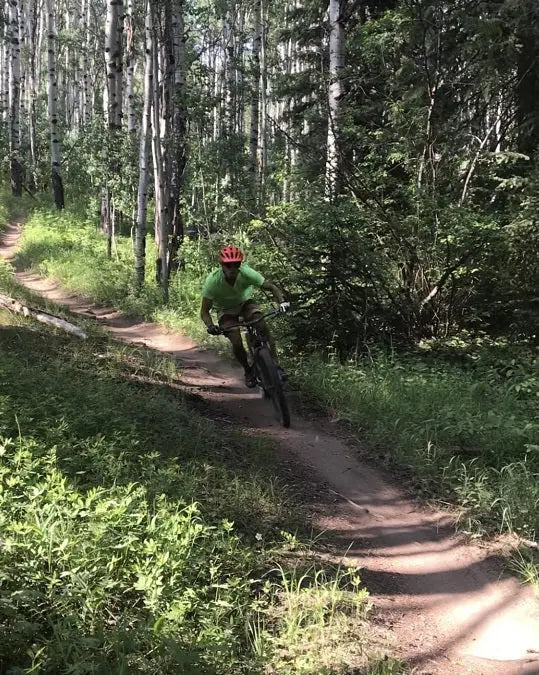
We talk about health a lot in our newsletter, from exercise regimens to healthy diets and everything in between. As I get older, I am becoming acutely aware of how important health is, and how letting our bodies go can affect us in a myriad of ways, from getting in the way of surfing and other hobbies to putting us in the hospital. But sometimes even if you take good care of yourself, you still end up having a medical crisis. Sometimes it’s genetics, other times it’s just plain bad luck.
Last week, Hawaiian South Shore’s adventure journalist Matt Rott was in Colorado on a mountain bike trip, when one of his riding buddies ran into a serious health issue. We’ll let him tell the story.
I like to mountain bike with a wide variety of people, from young kids to older guys my parents age. During this particular trip, Kilty and I went to Crested Butte with our friend Chuck, who is 66 years old. But despite his age, he’s super gnarly! He’s broken his back, wrist, clavicle, hip and ankle in a bunch of different mountain bike crashes over the years, and also destroyed his knee during a dirt bike crash in Moab, to the point where doctors told him he’d never walk again. He’s also a cancer survivor and has had heart surgery (ablations) to correct electrical issues. Despite all of this, he’s more active than most 66-year-olds you are likely to meet, and when he mountain bikes, he secretly gloats whenever he passes people on the trail, laughing to himself that they are unknowingly getting schooled by an old, “crippled” cancer survivor with heart disease.
During our trip, I noticed that he was riding a lot slower than normal on the climbs, but I wrote it off to the recent trip he did to Florida, where he essentially spent six weeks sitting around drinking margaritas (and not exercising). Plus, we were riding at 10,000 feet elevation and climbing steep pitches during our rides, so it wasn’t completely ridiculous for him to be huffing and puffing.
The fourth day of the trip, he stopped us 30 minutes into a ride and told us he was going to turn around. He said his trachea was hurting whenever he pedaled hard and got out of breath, so he wanted to head back to the car slowly rather than riding the rest of the way with us and then having a lot climb to get back to the trailhead. He told us he was alright, just tired and that maybe the smoke in the air was messing with his trachea, so we left him on the side of the trail and rode for another hour before turning around.
Halfway back to the car, we came across Chuck again. He had ridden back up to the pass, sat in his car for a while, then decided he was bored and ridden back down to us. He pedaled slowly up the steep hill with us for 45 minutes, keeping his heart rate down and his breathing slow in order to keep his trachea from hurting. Then he headed home, as our trip had come to an end.
The next day, Chuck went mountain biking with his son, and his trachea hurt again, despite the fact that they rode pretty slow. He started to worry, but being a tough old dude who had been through a lot of pain in his life, he ended up shrugging it off again. The day after that, he was out on a walk with his wife and his “trachea” started hurting again—but by now he was beginning to suspect that it wasn’t his trachea that was causing the problems. He ended up walking himself to the emergency room at the hospital a mile from his house, and checked himself in.
After an hour of tests, doctors had confirmed that Chuck had been having a series of minor heart attacks—during our mountain biking trip, during the ride with his son, and during the walk to the hospital. They did a heart cath and found that he had five clogged arteries and his heart was 95% occluded, which means barely any blood was getting through at all. The fact that he was even able to mountain bike was incredible in itself, but the fact that he hadn’t keeled over and died while riding with us at 10,000 feet elevation was the true miracle.
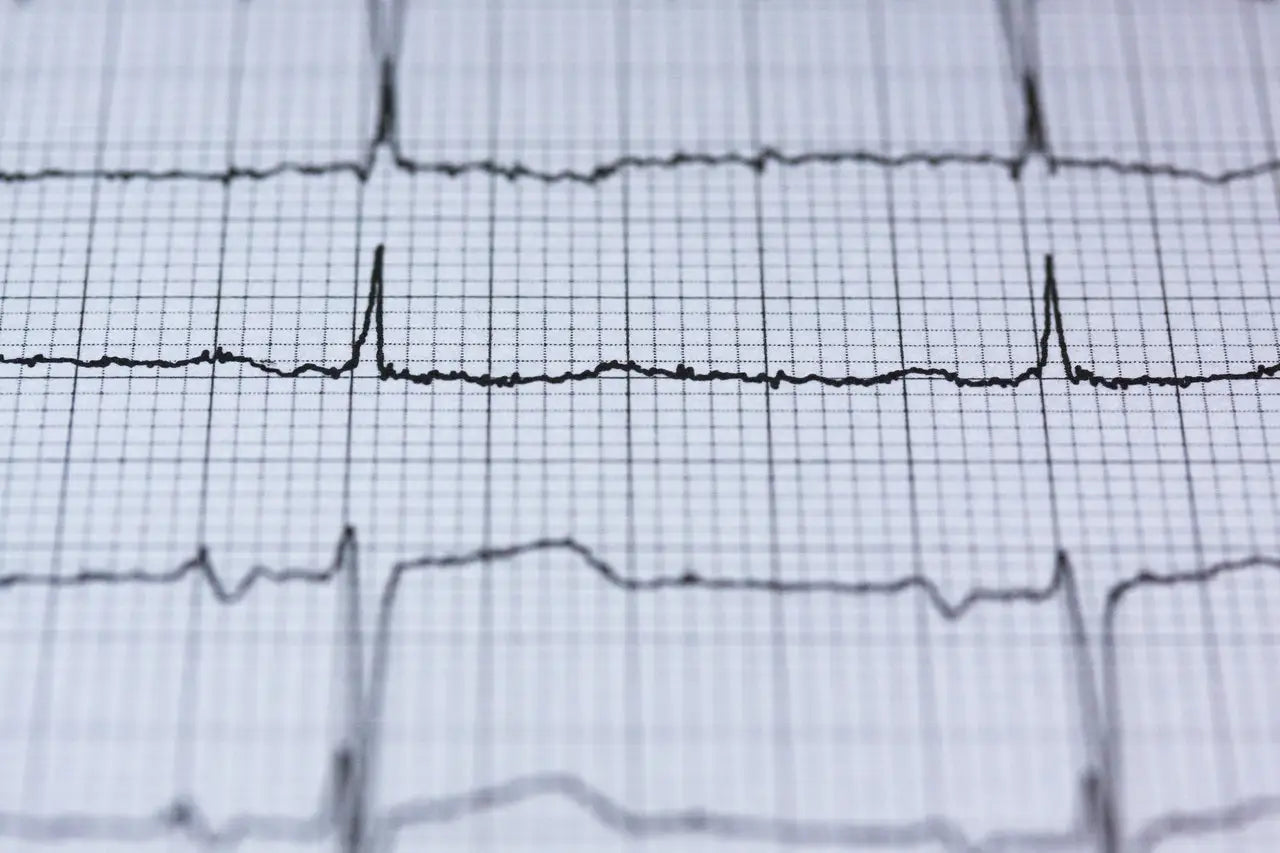
Doctors quickly scheduled open-heart surgery, which was performed the next day. Chuck’s heart was strong and his various markers were all good—low cholesterol, etc. But as it turned out he was genetically predisposed to heart disease, even though he had no idea that was the case. He’d done everything right, but still ended up having quintuple bypass surgery, with the arteries in his heart being replaced by veins and arteries harvested from his chest and leg.
I saw Chuck two days after the surgery, and he was already looking like his normal self. He was a bit weak, but he’d been out on three walks that day and recorded all three of them on Strava, which is an exercise app where you can record your efforts and compare them with other people who have biked/run/swam the same routes. The doctors say he can get back on a stationary bike in three weeks, and will be mountain biking with me by October. Knowing Chuck, he’ll probably try to push that a bit and be on his mountain bike by September. The guy is an absolute monster, and hasn’t let any medical crises stop him in the past.
The scary thing about Chuck’s recent misadventure is that there were absolutely no indicators that his heart was 95% blocked, aside from the fact that he was riding a bit slower than normal. The reality is that his arteries have probably been clogged to the point of needing heart surgery for years, but until he started having heart attacks, no one had any idea. He’s incredibly lucky that he was able to get to the hospital before things got worse, because if he’d coded on the trail, there’s a good chance he wouldn’t have survived.
Chuck’s experience has caused me to rethink my attitude toward preventative medicine. Although I am much younger than him, have no noticeable symptoms or medical distress, and train full time as a big wave surfer, mountain biker, and rock climber, I have decided that the only responsible thing to do is to get regular checkups that can identify silent issues such as heart disease. At the same time,
I have recommitted myself to a low-sodium, vegan, non-sugar, non-alcohol, macrobiotic diet—a diet full of whole grains, fruits, veggies, nuts, and seeds, that gives me the best chance of avoiding killers like heart disease and cancer. I encourage everyone else to do the same. You never know when a simple heart stress test or a salad instead of a hamburger could save your life!
Exercises to Prevent and Rehab Shoulder Injuries
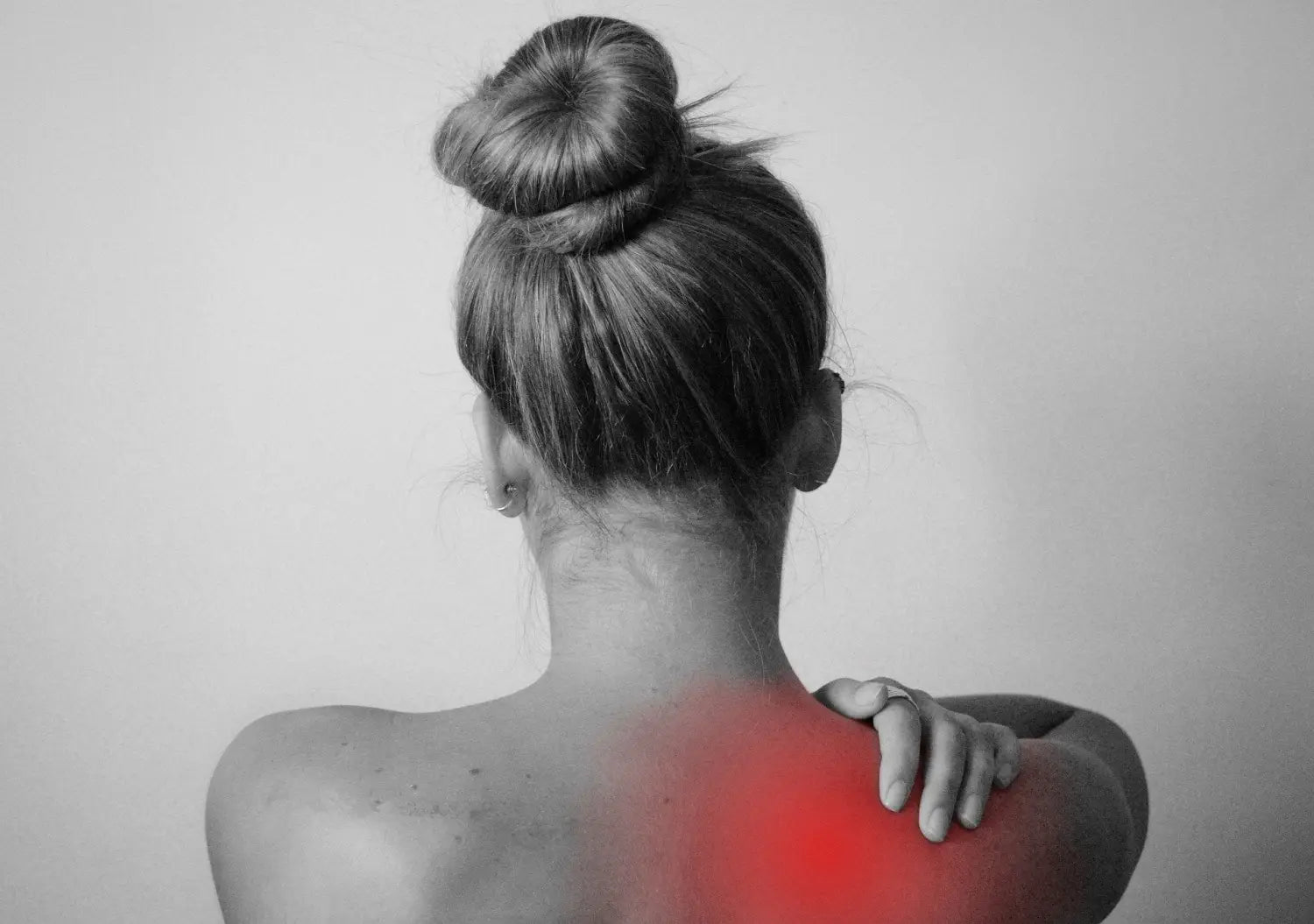
Like many surfers, I suffer from shoulder issues—both chronic crepitus and a more recent acute injury the causes cross-body pain. I am still able to paddle and surf, but certain movements are painful and the shoulder doesn’t feel 100% strong and stable. Shoulder injuries are common among surfers and other athletes such as swimmers, kayakers, climbers, and ball players who all perform the same arm motions over and over. Both acute shoulder injuries and repetitive use injuries can be quite debilitating. A lot of times, they result in time out of the water, arthritis, and even surgery. And the worst part about them is that they are practically inevitable for those of us who participate in these sports.
Fortunately, there are certain exercises that we can do not only to stabilize the shoulder in order to prevent injuries, but also to help rehabilitate them after injuries. Functional movement therapists believe that these exercises are essential to preventing chronic injuries and healing acute shoulder issues, and some have even found that they can help prevent surgery. The fundamental principal behind a lot of these injuries is that we modern-day humans have huge imbalances in our bodies, largely due to things like cell phones, laptops, and sitting at desks all day. We tend to develop a hunched-over, sunken-shoulder posture that is caused by—you guessed it—repetitive movements that we do during work and while scrolling on our devices. Hunching over all day and working with outstretched hands tends to over-strengthen certain muscles, such as the pecs, while our back and shoulder stabilizing muscles are neglected and become relatively weak compared to the front muscles. This all but ensures that we will eventually end up with shoulder injuries at some point, particularly if we participate in shoulder-heavy exercises such as paddling surfboards.
The solution to this is to preemptively strengthen the stabilizing muscles in our backs and rotator cuffs, while simultaneously releasing tension in our pecs. This can be achieved with a number of exercises, which will be described below.
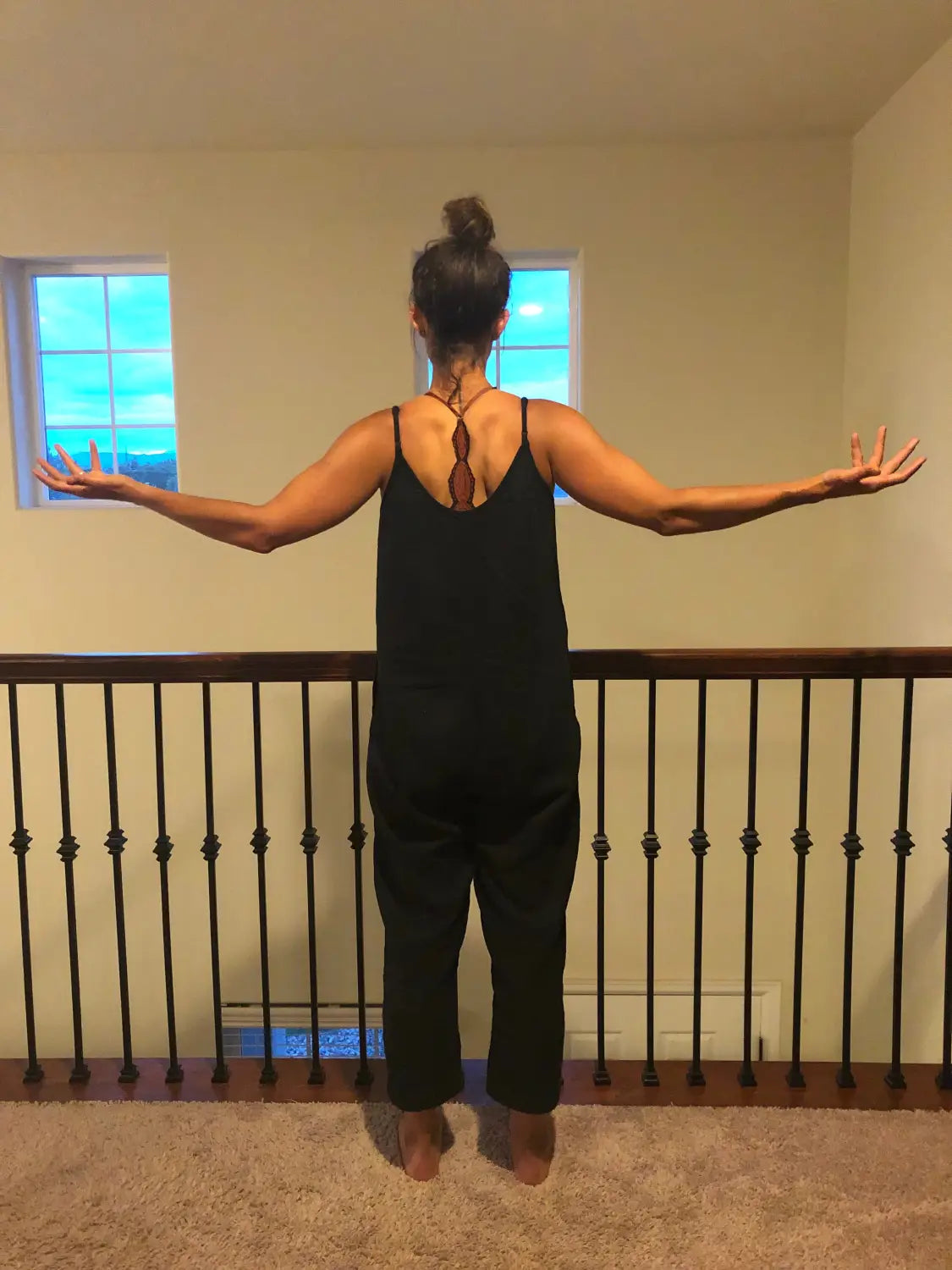
- Scapular Retraction: This basic exercise only takes one to two minutes to do, but can have a huge impact on your shoulder stability, strength, and posture. It should be performed once per hour while working at a desk or on a laptop/per phone (preferably at the same time every hour in order to turn it into a positive habit.To perform scapular retraction exercise, stand comfortably with your legs shoulder width apart. If it helps to see yourself, consider standing in front of a mirror or reflective window. Hold your arms out to your sides perpendicular to your body, then rotate your arms so that your palms face the ceiling and your pinkies are rotating back toward the wall behind you. This should cause your shoulders to externally rotate. Keep the elbows relatively straight, although it’s okay if there is a little bend in them. Now pull the scapula together in your back, imagining that you are trying to hold a pencil between them. (Obviously you won’t be able to get them this close together, but the greater the goal you give yourself, the harder you will work and the closer you will actually get them together.) Hold this pose for one minute, keeping the scapula flexed together and the shoulders externally rotated. (This should be quite difficult at first, but eventually you will become stronger and can work your way up to two minutes). Once you have completed the exercises, release the arms and feel the way that your shoulders are naturally pulled back and your chest out, creating better posture. Now spend 30 seconds walking around your office, focusing on the feeling of that proper posture and working to ingrain the feeling into your mind. The idea is to eventually teach your body to hold this posture naturally, even when you have not recently performed the exercise.
*Eventually, as you become stronger, you may find that you want to use resistance to do modified, non-static scapular retraction exercises. Consider getting a theraband or other resistance exercise band and performing similar scapular retraction motions while pulling on the two ends of the band with both hands for resistance.
- Arm Bar: The arm bar is a great way to strengthen the small muscles of the rotator cuff, which can easily become torn or otherwise damaged. It is also a great way to stabilize the shoulder as you rehabilitate from an injury, and in some cases can serve as an effective conservative alternative to surgery. The arm bar requires a kettle bell, probably between 10 and 20 pounds, depending on your body type and strength. Lie on your side with your top leg folded over the body and lying on the floor, and the bottom arm extended out above your head, for your head to rest on. Hold the kettle bell with the top arm and extend it above your body at a 90 degree angle, externally rotating and pulling your shoulder blades together, as if you were doing a modified scapular retraction. Now “turn off” or deactivate all of the large shoulder muscles and allow the kettle bell to take control of your arm, causing it to go into a “seizure” in which it moves around almost uncontrollably, the only thing keeping it up being the small stabilizing muscles of the rotator cuff. Do this for one minute, then switch to the other side. Once you have done both sides, stand up and walk around for 30 seconds, allowing your body to internalize the retraining you have just given it. If it is difficult for you to visualize this exercise from the description above, check out this video link for a visual explanation. (Interesting side note: A friend of mine is a rock climber and injured her shoulder last year, sustaining a 75 percent tear of her labrum. She is a neuro surgeon, and got a consult with an orthopedic surgeon in her hospital, who told her that without surgery and six to eight months of recovery, she would never rock climb again. She decided to work with a functional movement trainer first, to see if she could regain some function through conservative rehabilitation. After nine months of scapular retractions and arm bars—and no surgery—she was rock climbing at full strength, doing pull-ups, and even paddling a surfboard with no pain!)
- Stretching and Self-Massage: At the same time that we are strengthening our backs and shoulders, we want to relieve the stress and tightness of the muscles that we are overusing while we work on our devices. This can involve a variety of shoulder, arm, and upper body stretches, but should also involve rolling on your upper pectoral muscles with a massage ball. Spend a couple of minutes doing this, once or twice per day, focusing on quality massage and muscle release, but being careful not to hurt yourself. If you don’t have a massage-specific ball, you can use a tennis ball, racquet ball, or lacrosse ball.
July Member of the Month: Q&A with Tatum Shimabukuro
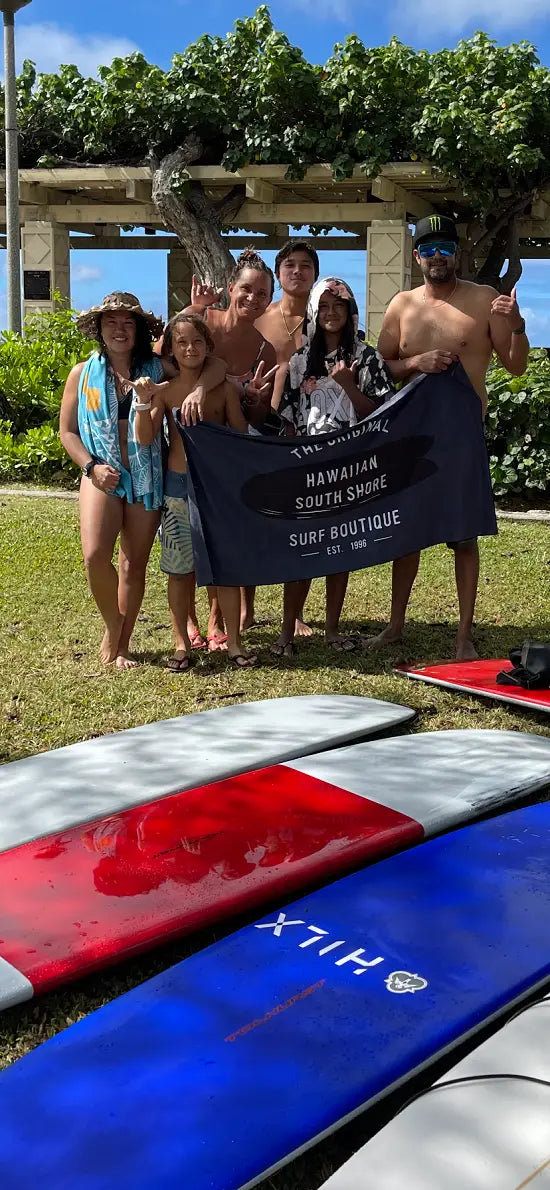
When and why did you initially get into surfing?
I started surfing as a young girl with my family at Waikiki Beach. We enjoyed weekends and summers there. I have always loved the ocean and surfing since then.
Did you have a time period you laid off from surfing? If so, when and why did you start back up?
When I became a mom, I stopped surfing for about 20 years. Now that my youngest son is older and comfortable with the ocean, we have been surfing as a family for the past several months.
What is your favorite thing about surfing?
Surfing brings me a lot of joy. It allows me to spend time with my family doing something we all love. Always great vibes, lots of smiles, nice people, and positive energy.
Where is your favorite place to eat after surfing? What is your favorite item on the menu?
Rainbows Drive Inn. Cheeseburger, French fries, slush float
What other hobbies do you have besides surfing?
I enjoy hiking, cooking, reading and watching my boys skateboard.
What type of work do you do?
Momager of my 3 kids, lol
Tell us about the board you recently purchased from us. What model and size is it, and how do you like its performance?
I recently purchased a Harley Ingleby 9’5 cruiser. I can’t say enough about this board. I absolutely love it. It’s very fast, responds very quickly, user friendly, easy to catch waves and lots of smiles.
Do you have any additional comments?
I also purchased a Harley Ingleby 9’1 HI4 and a Taylor Jensen 8’8 Gem for my 2 sons. They absolutely love their boards as well. The staff at Hawaiian South Shore are very knowledgeable and helpful in assisting you in finding that perfect board for your surfing style. Can’t wait to add more boards to our surf collection. Very thankful that surfing has come back full circle into my life. Thank you Hawaiian South shore ❤️
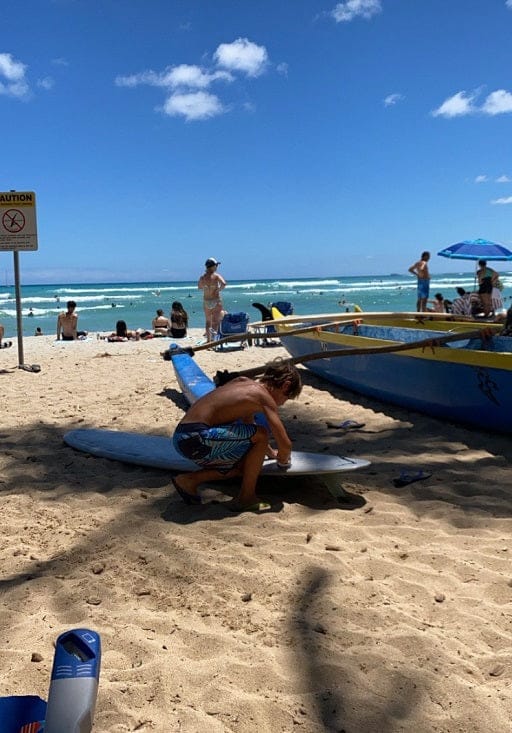
RSC Sun Screen SPF 32 - All Organic
Real Sun Cover is an Organic Skin Care line made right here in the USA. Real Sun Cover is manufactured with simple easy to understand ingredients that will protect your skin from the harsh rays of the sun as well as the typical chemicals found in most modern sunscreens.
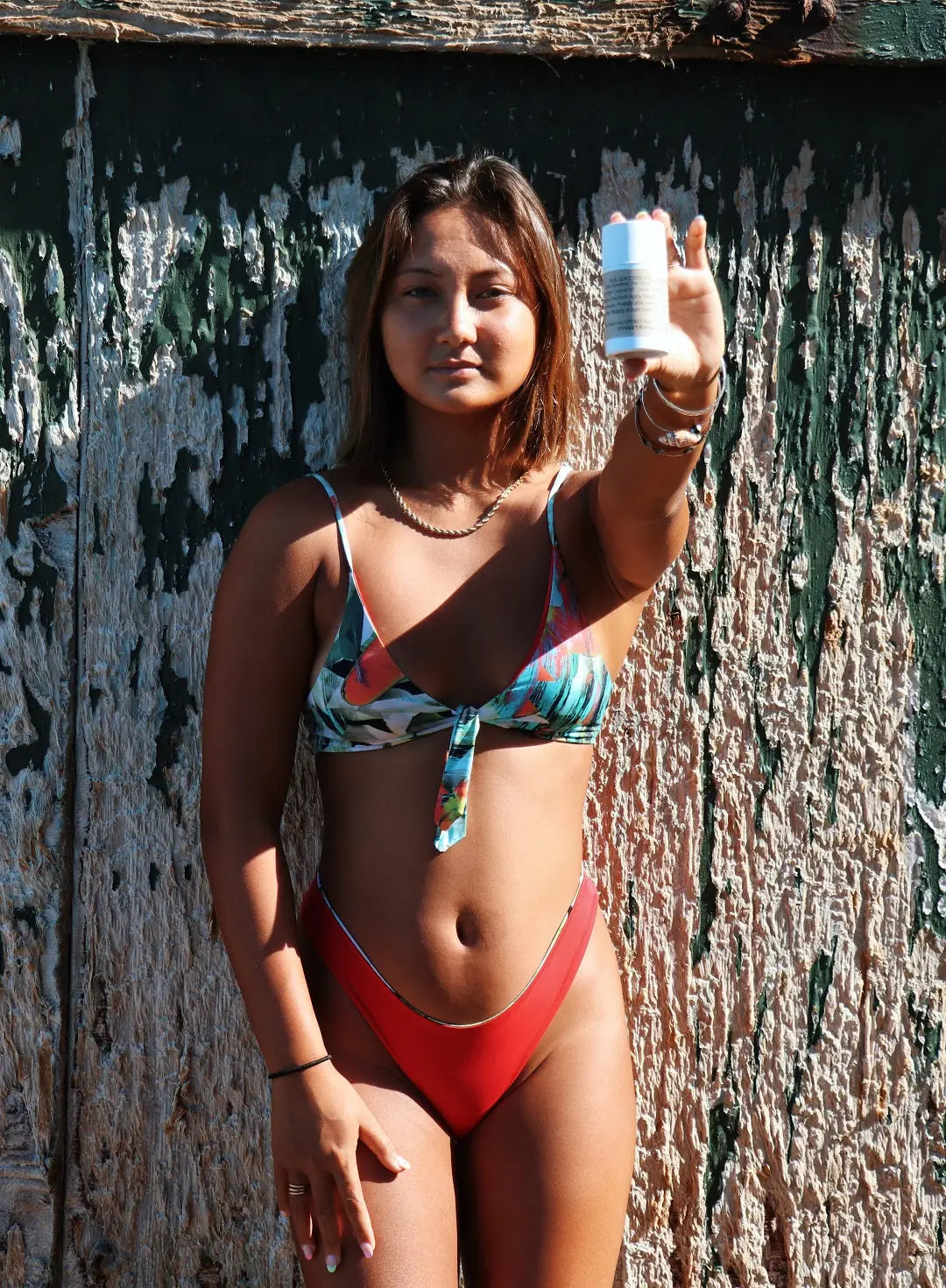
Sunburn is no joke, and skin cancer is even worse. Fortunately, the right sunscreen can keep you healthy and comfortable, no matter how long you spent in the water. Real Sun Cover is all natural/organic sunscreen is good for your body and good for the environment, meeting Hawaii’s reef-friendly regulations. Best of all, it will keep your skin healthy and happy. Don’t leave home without it!
Zinc Oxide Non-Nano Sunblock
Organic Zinc Oxide is the main active ingredient in Real Sun Cover. Many other modern sunscreens include harsh nano chemicals that must be absorbed into the skin to be effective. Real Sun Cover products sit atop the skin, providing superior sunblocking ability without requiring absorption time or damaging the skin with the product itself, while still providing 97% UVB protection.
Broad Spectrum
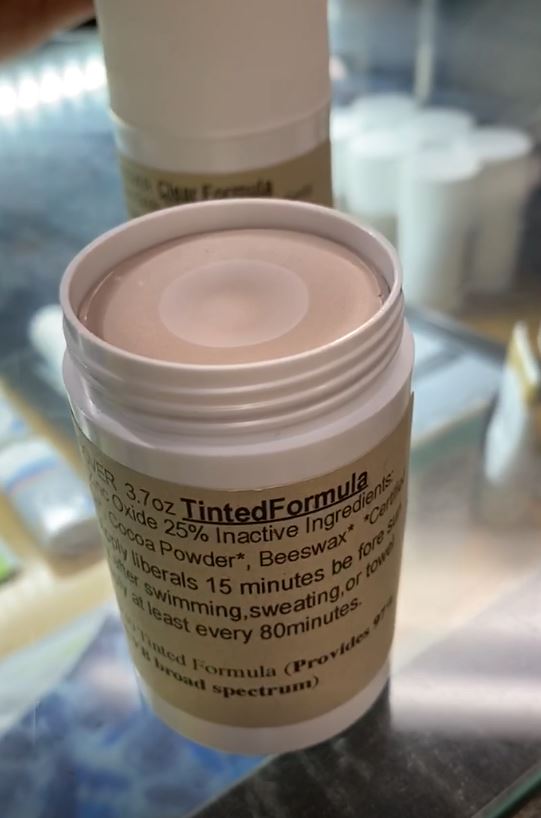
The Sun has two types of harmful rays, UVA and UVB. UVB rays are what cause sunburns while UVA rays penetrate the skin more deeply and are associated with wrinkling, leathering, and premature aging of the skin. Real Sun Cover broad-spectrum sunscreen provides protection against both types of these UV rays, providing the ultimate in protection against all types of sun damage.
Fragrance-Free & Baby Safe
Real Sun Cover skincare products are all-natural and fragrance-free, making them baby safe and suitable for use on the most sensitive skin.
Biodegradable and Reef Safe
Real Sun Cover sunblock is made with all-natural ingredients that will not wash off the skin and create a hazard for sea life and the ocean's fragile reef ecosystem.
As Featured on Honolulu Star-Advertiser Newspaper
CUSTOMER REVIEWS
Robert Schmidt—Saving Hawaii’s Oceans Through Reel Aloha Life
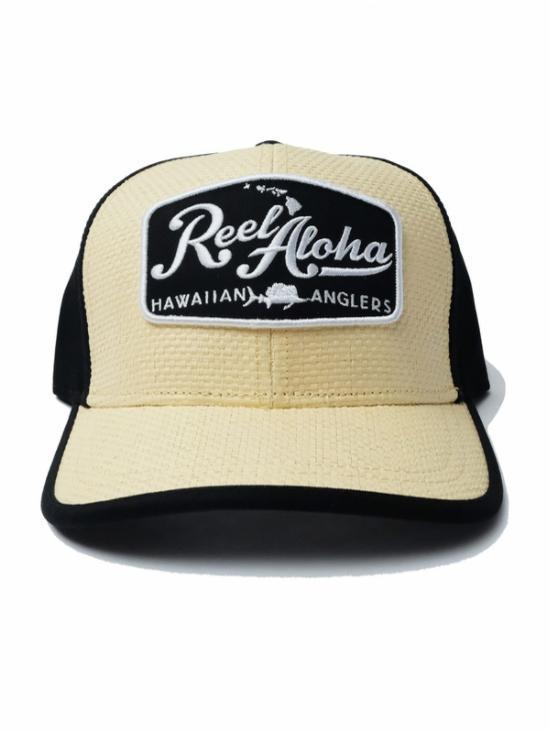
Robert Schmidt has been in the surf industry for a long time. Over the years, he has served as a designer and creative with OP, creative manager with both Quiksilver and Rusty, sales associate with T&C, and owner/manager of Katin. But around five years ago, he decided he was tired of being involved in the corporate side of surfing. His own personal wave count was way down, and he just didn’t feel like he was doing the things he was truly passionate about. He sold Katin, got back in the water, started exploring the backcountry more, and made a concerted effort to get back to his roots.
At the same time, Robert spent a lot of time talking with friends and peers in Hawaii, and grew concerned about the damage that was being to the ocean and reefs around the islands. He wanted to do something about it, so he decided to do what he was good at—start a brand. But this time, he was going to come at it from a completely different angle. He decided to do everything backwards—to build slowly, not emphasize profit margins to begin with, and instead really focus on figuring out how exactly this new brand would support the environment and clean up the oceans around Hawaii.
He eventually settled on Reel Aloha Life as his brand—a fishing-influenced ocean lifestyle brand that gave a nod to the local culture that he so admired in Hawaii. While product is still in development, he is adamant that he wants everything to be focused on sustainability. And more importantly, he has committed to donating a large portion of any proceeds to the University of Hawaii to fund a scholarship that will be paid directly to master’s level students who are working specifically in the field of ocean sustainability and preservation. (The scholarship may also be available to undergraduate students if the focus of their work is relevant). Since Reel Aloha Life hasn’t officially launched yet, Robert is funding the first year’s scholarship out of his pocket—but he is confident that the brand will soon be in stores all over, generating a profit cycle that will go straight into the hands of passionate students who are working to preserve Hawaii’s precious ocean ecosystem.
This is not the first time that Robert has used his business acumen to support good causes. When he owned and ran Katin, he wrote a $599 corporate check every month that was given to a trusted associate who distributed the money to families with special financial needs. He wanted all of the aid to go straight to these families, rather than getting tied up in the politics and management fees of nonprofit foundations, so instead he simply had his recruiter choose people who needed support each month, then “hired” them for “brand marketing purposes,” paying them as much as he could without having to file a 1099 and exposing them to taxation. In essence, he and Katin were simply giving away money each month to help people put food on their tables and keep their kids clothed.
While his focus with Reel Aloha Life is slightly different, it is obvious from talking to Robert that his intention is very much the same. He didn’t start the brand to make money. Instead, his goal is to raise awareness about environmental issues in Hawaii and fund the academics who are looking for creative ways to solve these issues. I can’t think of a better reason to start a company, which is why I was so excited when Robert dropped off a bit of product at the shop and told me his story. I am looking forward to the brand’s official launch, and can’t wait to get them in the shop!
